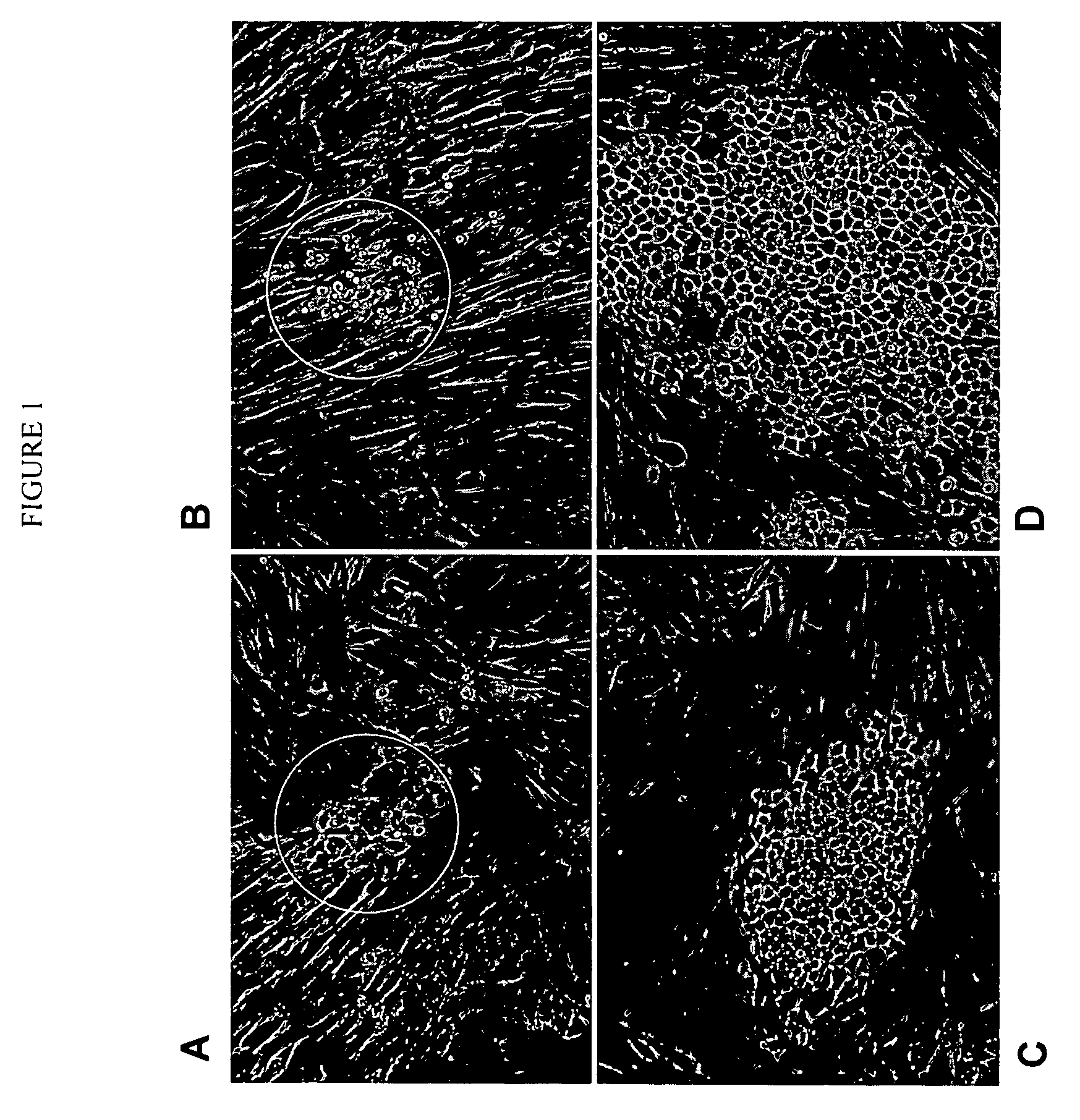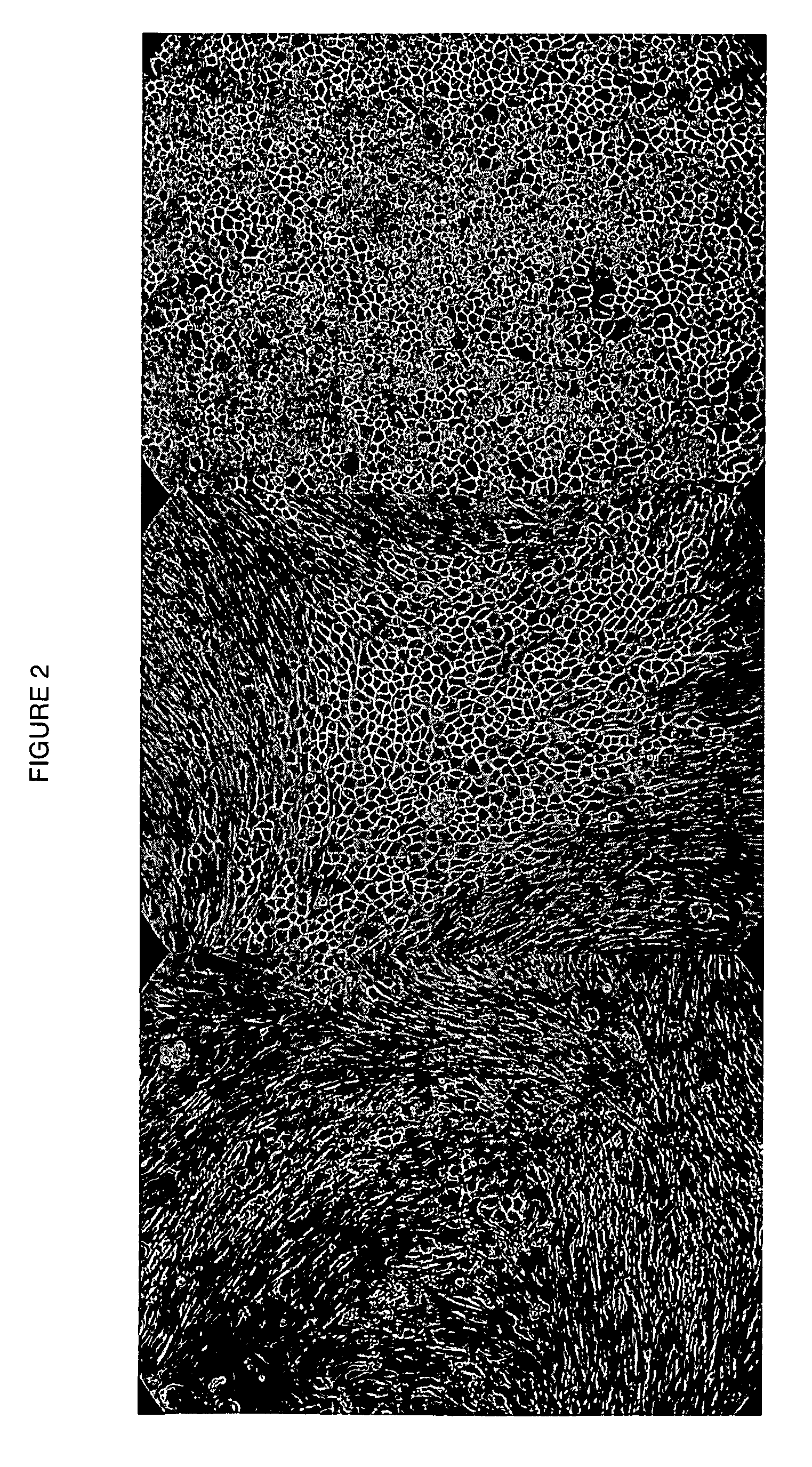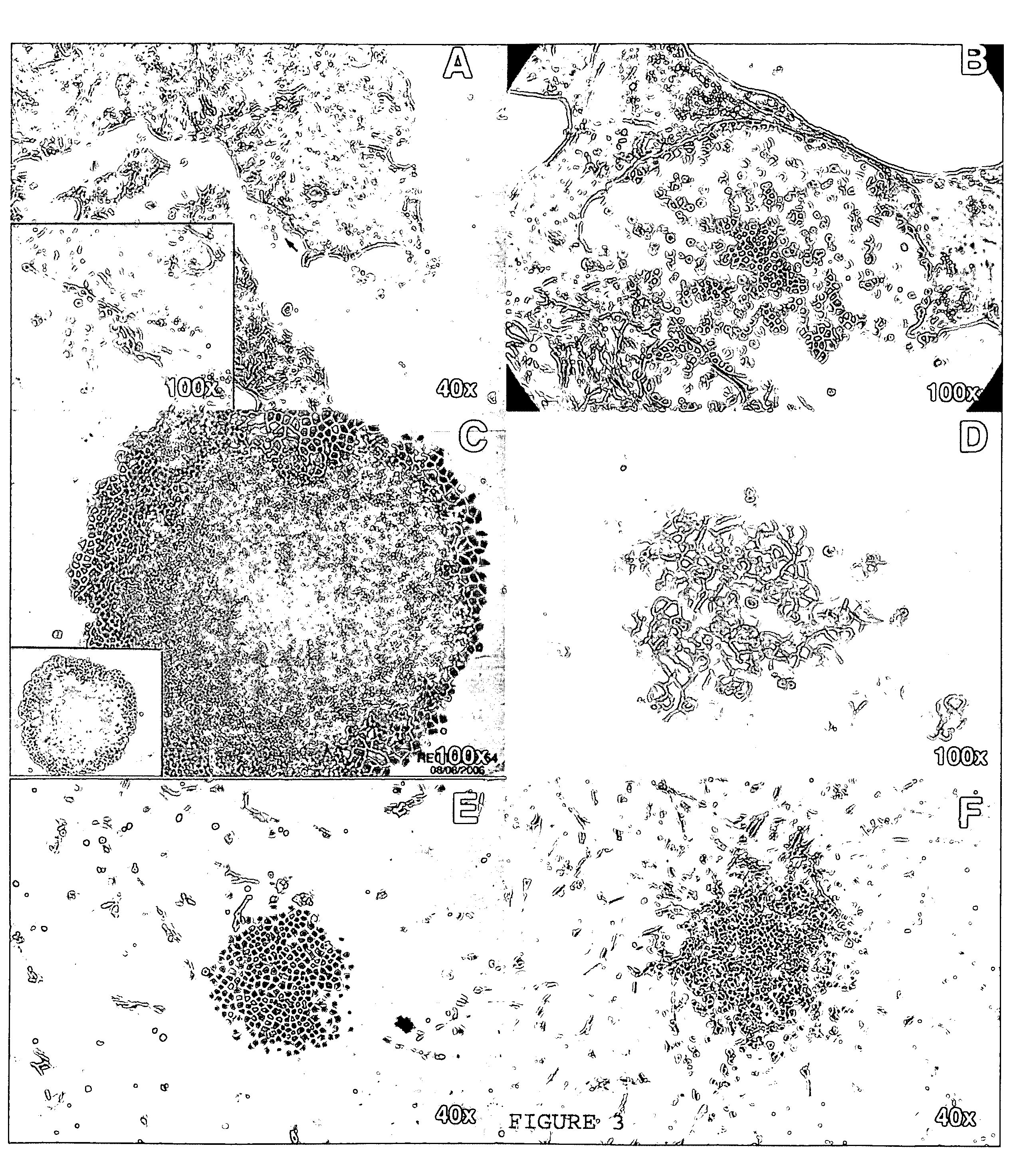Human cancer stem cells
a technology of stem cells and human cancer, applied in the field of human cancer stem cells, can solve the problems of difficult targeting, insufficient targeting of existing cancer treatments, and difficulty in removing cancer cells from patients' bodies, and achieve the effect of loss of growth capacity
- Summary
- Abstract
- Description
- Claims
- Application Information
AI Technical Summary
Benefits of technology
Problems solved by technology
Method used
Image
Examples
example 1
Isolation and Culturing of Colorectal Carcinoma Cells (CRCA)
[0173]Tissue from a colorectal carcinoma was briefly rinsed in sterile phosphate buffered saline (PBS) containing 100 μg / mL gentamycin, placed in a 100 mm tissue culture dish, and minced into small (<1 mm) pieces. The minced tissue was suspended in 5 mL of dissociation media (F12 / DMEM containing 100 μg / mL gentamycin and 200 μL collagenase-dispase (10% wt / vol in PBS) with soybean trypsin inhibitor (STI, 10% (v / v)) and incubated at 37° C. At 5-minute intervals, the suspension was pipetted to loosen cell aggregates. Enzymatic activity was stopped when aggregates of 10-20 cells appeared dissociated from the tissue.
[0174]The suspension was washed with F12 / DMEM by centrifugation (4 minutes at 900 rpm) and the resulting cell pellet was resuspended in culture medium (serum free F12 / DMEM supplemented with insulin (10 μg / mL), transferrin (10 μg / mL), epidermal growth factor (EGF) (5 ng / mL), selenium (2.5×10−8M), triiodothyronine (T3) ...
example 2
Isolation and Culturing of Rectal Carcinoma Cells (RECA)
[0177]Tissue from a rectal carcinoma was briefly rinsed in sterile phosphate buffered saline (PBS) containing 100 μg / mL gentamycin, placed in a 100 mm tissue culture dish, and minced into small (<1 mm) pieces. The minced tissue was suspended in 5 mL of dissociation media (F12 / DMEM containing 100 μg / mL gentamycin and 200 μL collagenase-dispase (10% wt / vol in PBS) with soybean trypsin inhibitor (STI, 10%(v / v)) and incubated at 37° C. At 5-minute intervals, the suspension was pipetted to loosen cell aggregates. Enzymatic activity was stopped when aggregates of 10-20 cells appeared dissociated from the tissue.
[0178]The suspension was washed with F12 / DMEM by centrifugation (4 minutes at 900 rpm) and the resulting cell pellet was resuspended in culture medium (serum free F12 / DMEM supplemented with insulin (10 μg / mL), transferrin (10 μg / mL), EGF (5 ng / mL), selenium (2.5×10−8M), T3 (1×10−9M), ethanolamine (1×10−6M), phosphoethanolamine...
example 3
Isolation and Culturing of Lung Carcinoma Stem Cells
[0180]Tissue from a lung adenocarcinoma was briefly rinsed in sterile phosphate buffered saline (PBS) containing 100 μg / mL gentamycin, placed in a 100 mm tissue culture dish, and minced into small (<1 mm) pieces. The minced tissue was suspended in 5 mL of dissociation media (F12 / DMEM containing 100 μg / mL gentamycin and 200 μL collagenase-dispase (10% wt / vol in PBS) with soybean trypsin inhibitor (STI, 10%(v / v)) and incubated at 37° C. At 5-minute intervals, the suspension was pipetted to loosen cell aggregates. Enzymatic activity was stopped when aggregates of 10-20 cells appeared dissociated from the tissue.
[0181]The suspension was washed with F12 / DMEM by centrifugation (4 minutes at 900 rpm) and the resulting cell pellet was resuspended in culture medium (serum free F12 / DMEM supplemented with insulin (10 μg / mL), EGF (5 ng / mL), selenium (2.5×10−8M), bovine pituitary extract (BPE) or PPE (75 μg total protein of PPE / mL).
[0182]The ce...
PUM
| Property | Measurement | Unit |
|---|---|---|
| time | aaaaa | aaaaa |
| concentration | aaaaa | aaaaa |
| v/v | aaaaa | aaaaa |
Abstract
Description
Claims
Application Information
 Login to View More
Login to View More - R&D
- Intellectual Property
- Life Sciences
- Materials
- Tech Scout
- Unparalleled Data Quality
- Higher Quality Content
- 60% Fewer Hallucinations
Browse by: Latest US Patents, China's latest patents, Technical Efficacy Thesaurus, Application Domain, Technology Topic, Popular Technical Reports.
© 2025 PatSnap. All rights reserved.Legal|Privacy policy|Modern Slavery Act Transparency Statement|Sitemap|About US| Contact US: help@patsnap.com



